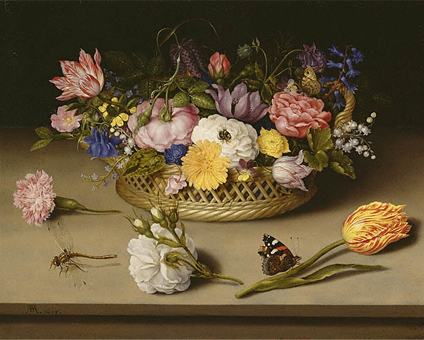Politics, death and wonder. And you thought they were just Dutch flower paintings. By Andrew Graham-Dixon
It is difficult to know just what was on Ambrosius Bosschaert's mind when he painted Flowers in a Rummer, circa 1614. Perhaps he resented the sheer sweat of pictorial fidelity to the striped tulip, with its irregular sawtooth edge; to the crumpled old rose; to the drooping fritillary; to the ragged scarlet-and-white carnation; to the butterfly with spotted, fine-veined wings. Perhaps he felt the joys of spring. Then again, he could have been thinking of the Book of Isaiah: "All flesh is grass, and the goodliness thereof is as the flower of the field; the grass withereth, the flower fadeth, because the spirit of the Lord bloweth upon it." Bosschaert's painting is a mixed bouquet in which observation and moralisation, pleasure and morbidity are uncertainly intertwined.
Flowers in a Rummer is one of the earliest pictures in "Dutch Flower Painting 1600-1750", at the Dulwich Picture Gallery. It is, therefore, one of the earliest paintings of flowers and nothing but in Western art. Before the start of the 17th century, flowers in European painting were almost always confined to supporting roles. They were saint's attributes. They were colourful (and usually symbolic) embellishments of landscapes in which momentous events unfolded.
Then, in early 17th-century Holland, a small revolution took place. Artists began to paint flowers and only flowers. Bosschaert painted them crammed, superabundantly, into gleaming pewter vases. Balthasar van der Ast painted them writhing in splendour. Anthony Claesz painted them wilted, in melancholy shade, on ma-hogany tabletop or chipped marble slab. Dutch flower painting is portentous and mysterious at the same time. In the dark grey galleries of Dulwich the silence deafens as secret histories bloom and fade.
The earliest practitioners of what...


